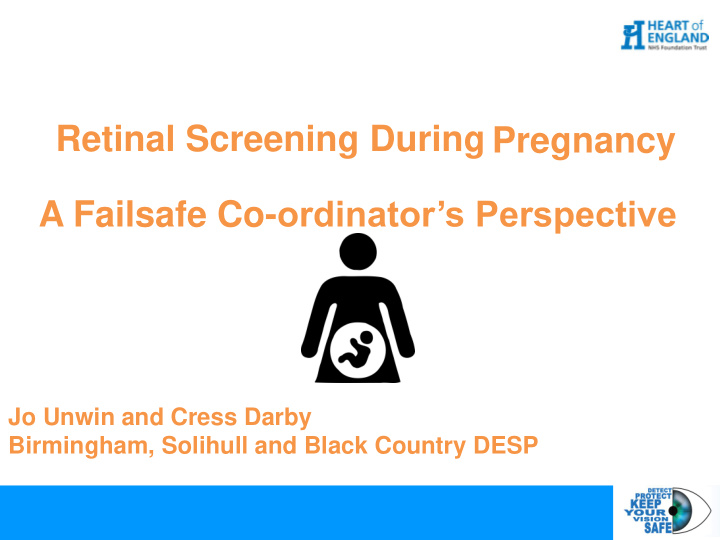



Retinal Screening During Pregnancy A Failsafe Co- ordinator’s Perspective Jo Unwin and Cress Darby Birmingham, Solihull and Black Country DESP
Pregnancy & DR Pre-conception screening High risk patients Risk of Progression of DR and Complications Increased Frequency of Screening Intervals
Our Pathway
Considerations for Coordinators • Identification of Pregnant Patients • Tracking and Failsafe • Timely Invitation and Follow up • Referrals to HES and Notifying HES • Closing loops and back to RDS as appropriate
The Need for Sensitivity • At one site – Heartlands 2015/16 • Reported as pregnant: 110 • Miscarried/Neonatal Death: 16 • 15% of pregnancies ended early
Identification of Pregnant Patients Who? • Known Type 1 and Type 2 patients who then become Pregnant • Newly diagnosed / move to our area during pregnancy • Patients who may come from outside your scheme area for antenatal care and want screening at the same time
Identification of Pregnant Patients How? Patient Screener DSN Midwives GP
Tracking and Failsafe • Flag - Move to DS • Record on Timeline - LMP, EDD • Book Appointment send letter & pregnancy leaflet
Tracking and Failsafe
Tracking and Failsafe Monthly Pregnancy Failsafe Report In care In RDS No Appointment Complete List
Tools of the Trade
Referrals To HES & Notifying HES Of Pregnant Patients • Patients already under the care of HES • Pregnant patients referred Urgently • Letter to HES notifying of Pregnancy
Managing Non-Attendance • Misunderstanding/Miscarriage/Poor attender • Screening Intervals/Number of Appts • Temporary accommodation for some • Confidentiality when getting in touch • Direct communication with the patient is vital
Closing Loops & Back to RDS • EDD passed • Non Attendance • Same patient multiple times • Notes Notes Notes • Repeat
Thanks for your attention • Any Questions?
Recommend
More recommend